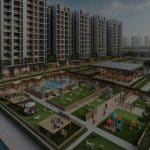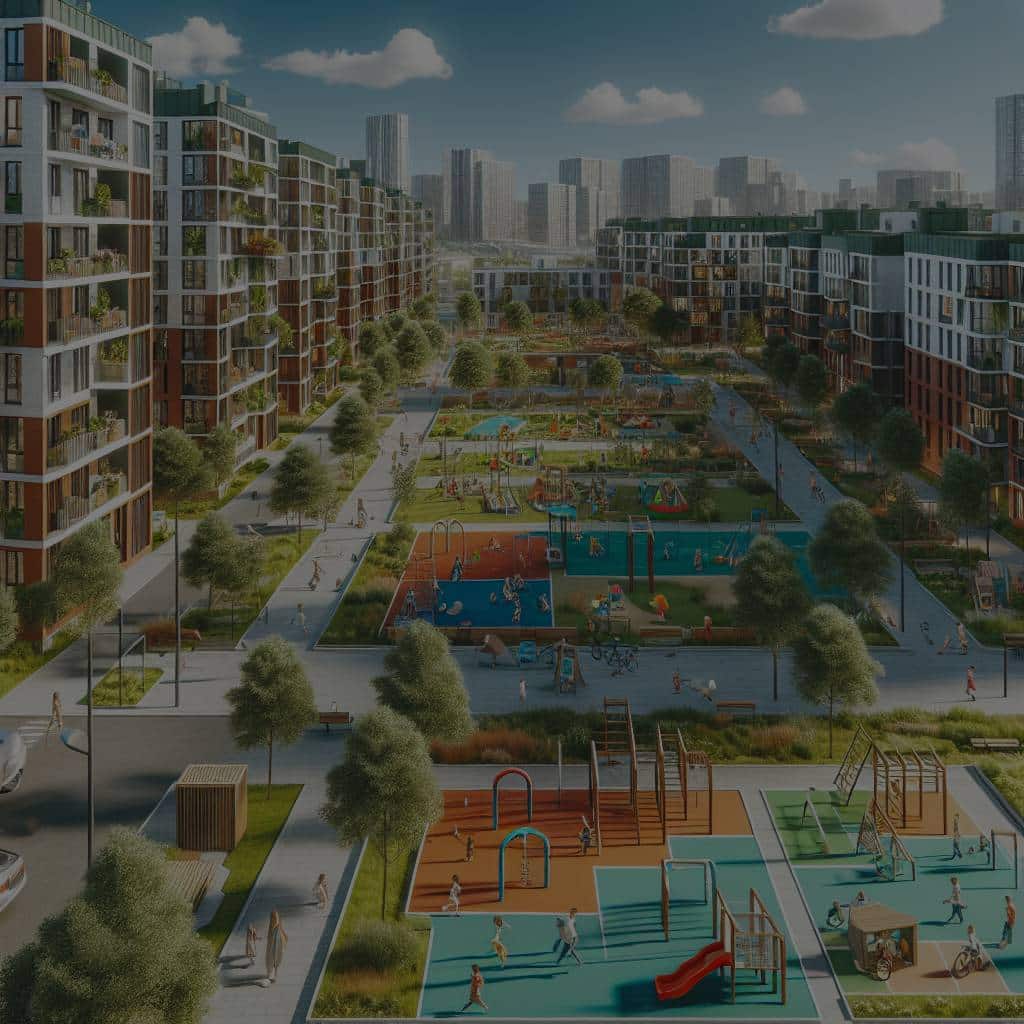The modern city can often feel like a grown-up’s playground, with towering skyscrapers and fast-paced streets. However, children are an integral part of urban communities and deserve to live in cities designed with their needs in mind. It’s time to reimagine our urban landscapes to be child-friendly, creating safe, engaging, and accessible spaces where our youngest inhabitants can thrive. This article will guide you on how to design child-friendly urban residential spaces, focusing on safety, learning, community, and play.
Creating Safe Urban Spaces for Children
Child safety is paramount in any environment, more so in the bustling hubs of our cities. Urban streets can be perilous for children, with traffic, strangers, and a lack of structured play areas. As citizens and planners, it’s essential that we prioritize safety in our urban planning and design.
This might interest you : What Are the Emerging Trends for Office Spaces in the Post-Pandemic Gig Economy?
A child-friendly city must create a buffer between the vibrancy of the city and the tranquillity of residential spaces. This can be achieved through the strategic placement of schools and residential areas away from busy streets. Additionally, you should consider implementing traffic calming measures such as speed humps and pedestrian crossings near schools and residential zones.
Designing safe, well-lit pathways and cycle lanes can further enhance child safety by encouraging children to walk or cycle to school. This not only fosters a sense of independence but also promotes physical activity. Importantly, children should be involved in the safety planning process to ensure the measures implemented are effective and resonate with their perception of safety.
Also to discover : How to Integrate Pet Care Facilities into Multi-Unit Residential Developments?
Fostering Learning through Urban Design
With schools being the primary centres for structured learning, we often overlook the city’s potential as an informal learning space. Urban design can play a pivotal role in making cities conducive learning environments for children.
Public spaces such as parks, libraries, and museums should be easily accessible to children. These spaces provide a wealth of learning opportunities outside the confines of a traditional classroom. Additionally, designing interactive elements such as educational murals, informative signages, or historical markers into the cityscape can further spark children’s curiosity and expand their knowledge.
Beyond physical spaces, city planning should also consider organising regular community-based learning activities such as storytelling sessions, nature walks, or historical tours. Such initiatives can enhance children’s connection with their city and foster a lifelong love for learning.
Promoting Community Engagement through Urban Spaces
Fostering a sense of community among children is crucial for their social development. Urban design can play a significant role in creating spaces that encourage community engagement and interaction.
Public spaces such as parks, playgrounds, and sports facilities are perfect for fostering interactions among children. However, these spaces must be designed keeping in mind the diverse needs of children of different ages and abilities.
Moreover, city planning should also promote community events such as festivals, sports tournaments, and cultural activities that cater to children. Such events not only provide children with a sense of community but also offer them an opportunity to learn about different cultures and traditions.
Making Play an Integral Part of Urban Design
Play is a fundamental right of every child. It fosters creativity, builds physical strength, and aids cognitive development. However, urban spaces often lack adequate areas for children to play freely and safely.
Integrating play into urban design is not limited to creating playgrounds. It includes designing city elements such as benches, staircases, and walls that can double up as play structures. This concept, known as playable city, encourages children to interact with the city in new and imaginative ways.
Additionally, nature-based play should be promoted in urban spaces. Incorporating elements of nature such as trees, water bodies, and rocks in cityscapes can provide children with diverse, multi-sensory play experiences.
In conclusion, designing child-friendly urban residential spaces involves a holistic approach that considers safety, learning, community, and play. Involving children in the planning and design process can further ensure that our cities are places where our youngest citizens can thrive and grow.
Green Spaces: A Vital Element in Child-Friendly Urban Design
Green spaces play a pivotal role in promoting child-friendly urban living. Numerous studies have shown the benefits of nature for children’s physical and mental well-being, making it a crucial element in creating child-friendly cities.
Green spaces, such as parks, gardens, or even small communal courtyards, provide children with a safe space to play, explore, and interact with their environment. These spaces can help to foster a sense of curiosity and discovery in children, promoting learning and cognitive development.
The concept of a ‘green schoolyard’ has gained momentum in recent years, with schools across the world transforming their concrete playgrounds into lush, green spaces. These schoolyards not only provide a safe space for children to play but also serve as an outdoor classroom where children can learn about nature and sustainability.
Incorporating green spaces into urban planning should also include measures to ensure their safety and accessibility. Well-lit paths, clear visibility, safe play equipment, and easy access for families with strollers or children in wheelchairs are all factors to consider in designing child-friendly green spaces.
Biophilic design, or integrating elements of nature into built environments, is another strategy to promote child-friendly urban spaces. This can include green walls, indoor plants, water features, or natural materials in building construction. These features can help to bring a sense of calm and tranquility to urban spaces, reducing stress and promoting well-being among children and their families.
Road Safety: A Key Concern in Urban Planning for Children
Road safety is a significant concern in urban areas for children and families. Busy streets, fast vehicles, and complex road networks can pose a significant risk to young children, who may not yet fully understand the rules of the road.
Implementing child-friendly road safety measures in urban planning is crucial in creating cities where children can move about safely and independently. This can include pedestrian-friendly features such as wide sidewalks, pedestrian crossings, traffic calming measures, and bicycle lanes.
Urban design should also consider children’s perception of road safety. Children often perceive road safety differently from adults. For example, they might feel safer crossing the street at a familiar place, even if it’s not a designated crossing point. Involving children in the planning and design process can help to ensure that road safety measures address their unique perspectives and concerns.
Public transport is another key aspect of road safety for children in urban areas. Public buses, trams, and metros should be designed with child-friendly features such as low steps, space for strollers, and clear, easy-to-understand signage.
Conclusion: Building Cities for the Future
In conclusion, designing child-friendly urban residential spaces involves a wide array of factors, from ensuring road safety to fostering a sense of community and promoting learning through urban design. Incorporating green spaces and promoting play as an integral part of urban planning can significantly enhance the quality of life for children in cities.
The concept of a child-friendly city transcends beyond mere urban planning. It involves a shift in perspective at the city level, viewing the city through the eyes of our youngest citizens, and giving them a voice in the design of their public realm.
Through collaborative and inclusive planning and design, we can bring about cities that are not only friendly for children and families but are also sustainable, resilient, and thriving urban ecosystems. The creation of child-friendly cities is an investment in our future, shaping young people who are healthy, engaged, and invested in their communities. Therefore, every step taken towards a child-friendly urban landscape is a stride towards a more vibrant, inclusive, and sustainable future.











